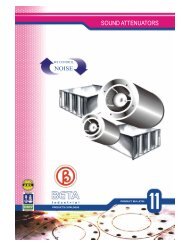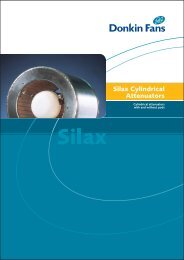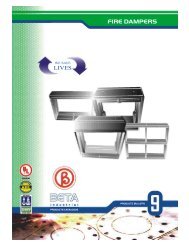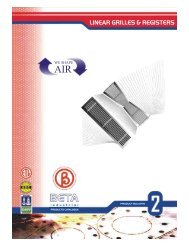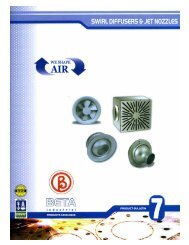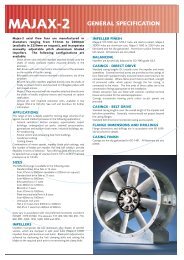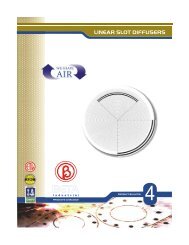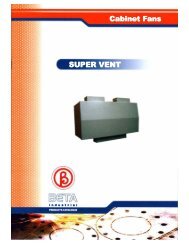Standard Emergency Lighting - Beta Industries
Standard Emergency Lighting - Beta Industries
Standard Emergency Lighting - Beta Industries
You also want an ePaper? Increase the reach of your titles
YUMPU automatically turns print PDFs into web optimized ePapers that Google loves.
CTS<br />
Central <strong>Emergency</strong> <strong>Lighting</strong> System<br />
Control Unit (CU)<br />
A liquid cristal display (80 characters on 2 lines), a<br />
24-column printer and a keyboard interface theoperator<br />
with the CU.<br />
The display shows various selection menus to<br />
make the operator’s control easier, as well as the<br />
correct key to be pressed to start the various functions.<br />
A keyswitch located at the back of the<br />
keyboard can be used to prevent access by<br />
unauthorised persons.<br />
The CTS can be integrated into a centralised system<br />
with a wider range of functions, or into a remote<br />
control system via a telephone line. Two serial-line<br />
connectors (RS232) are located at the back of the<br />
CU and available also for the link between CU and<br />
SCASE/SA Soccor Group .<br />
A sealed, rechargeable battery provides for 3 hours<br />
back up in case of a power failure<br />
Self programming<br />
The CU is able to check the start up system and<br />
report the number of luminaires as well as the list of<br />
corresponding identification code<br />
Control Module (CM)<br />
Using the CM, all units in a CTS system can be controlled<br />
from a PC. Beghelli supplies the appropriate<br />
software together with the CM.<br />
Operation<br />
The CTS working is based on the interactive communication<br />
between the CU and each luminaire,<br />
carried out in a sequencial operation manner<br />
(polling). The CU microprocessor sends messages<br />
on the data transmission line, recognised only by<br />
the appropriate coded luminaire. The luminaire’s<br />
microprocessor involved sends back a reply message,<br />
which is then analised by the CU.<br />
The CTS controls not only the status of the luminaires<br />
but also the whole system. Any problems on<br />
the data line or main power line are immediately<br />
detected and a warning message is sent to the CU.<br />
Operational test<br />
The CU runs the operational test automatically or<br />
on a specific command. The operator can use the<br />
CU to program the time lag between two automatic<br />
tests as well as the test timing.<br />
During any test, the luminaire operates for about<br />
one minute to verify the correct working of the<br />
fluorescent tube.<br />
The CU collects and stores any failure and reports<br />
to the operator via display or a print out, stating test<br />
day and time and also type of failure and identification<br />
number of the luminaires involved. A yellow<br />
light located on the front of the luminaire facilitates<br />
identification of the defective unit.<br />
Full duration test<br />
Full duration test is run as the functionality test but,<br />
because the state of the central battery is checked<br />
by the CU, is longer collecting and storing any<br />
possible failure.<br />
Test results are shown on the display, and it is possible<br />
to print out test date and time, type of failure<br />
and identification number of the luminaires involved.<br />
A yellow LED located on the front of the luminaire<br />
facilitates identification of the defective unit.<br />
The operator can program automatic testing<br />
frequency between 1 and 99 weeks or can run<br />
tests on demand.<br />
INSTALLATION 1 REMOTE CONTROL STATION INSTALLATION 2<br />
LUMINAIRES<br />
PRINTER<br />
PC<br />
LUMINAIRES<br />
PRINTER<br />
INTERFACE<br />
INTERFACE<br />
CU<br />
MODEM<br />
MODEM<br />
MODEM<br />
CENTRAL MODULE<br />
PC<br />
TELEPHONE LINE<br />
TELEPHONE LINE<br />
17



